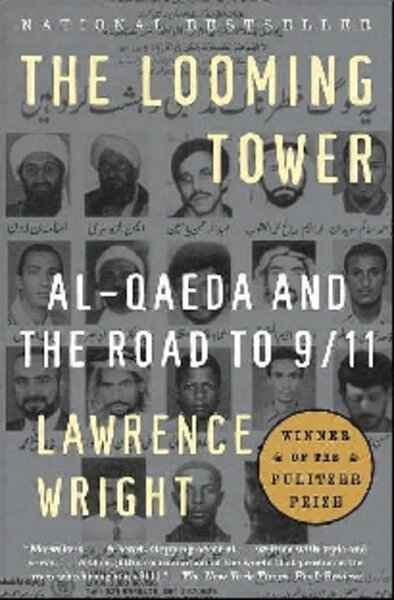Classic book review – The Looming Tower
Loading...
[The Monitor occasionally reprints material from its archives. This book review originally ran on Sept. 5, 2006.] Ali Mohammed isn't a boxing legend whose name has been transposed.
He is, instead, an Egyptian double agent who formulated the playbook for violence and other military tactics as a part of Osama bin Laden's Al Qaeda while also stringing along American intelligence agencies.
Five years after the 9/11 attacks, that nugget of information is interesting enough. What makes Mohammed's story riveting is how he gleaned the sophisticated techniques that were later passed on to Al Qaeda and, in turn, transformed the terrorist organization from a bedraggled, ineffective guerrilla force into lethal killers.
In the mid-1980s, Mohammed, after a brief stint working as a CIA agent in Germany, came to America and joined the United States Army. In the Army, he trained with elite soldiers at Fort Bragg in North Carolina.
During his down time, Mohammed covertly couriered US Army maps and training manuals to a nearby Kinko's and made copies. Mohammed, in effect, was paid by the federal government while stealing tactics and intelligence later used by Al Qaeda to terrorize the US and its allies. In 1998, he posed as a tourist and cased the East African embassies bombed under bin Laden's direction, the precursors to 9/11.
This frightening episode represents one of many tantalizing threads running through Lawrence Wright's tapestry of terrorism in The Looming Tower, a book filled with dazzling insight, pitch-perfect anecdotes, and compelling context.
Simply put, this is the most thorough and accessible account of the people, politics, and roiling theology behind Islamic terrorism. It should be required reading for every American; yes, it is that good.
Indeed, the book traces the contemporary movement far beyond the boilerplate lingo of jihad and infidels. The author traces the philosophy adopted by bin Laden and Al Qaeda to Sayyid Qutb, a brilliant dissident Egyptian scholar. Qutb's influence grew when Egyptian President Gamal Abdel Nasser had him executed in 1966.
Wright, a contributor to The New Yorker magazine, spent five years researching and writing "The Looming Tower." On every page, that diligence rewards the reader.
Four men dominate Wright's account: bin Laden, the charismatic, deluded Al Qaeda founder who began as a proud Saudi and later wound up banished by his own people; Ayman al-Zawahiri, the Egyptian radical who only dreamed of a coup d'état in his native country but later joined forces with bin Laden and pursued an entirely different mission; Prince Turki al-Faisal, the former head of Saudi intelligence; and John O'Neill, the FBI counterterrorism chief who died in the 9/11 attacks after tirelessly tracking bin Laden.
In the case of the infamous Al Qaeda leaders, who remain unaccounted for five years after the attacks on Manhattan and Washington, Wright strips away much of the mystery. He tracks down all manner of interesting details, from bin Laden's boyhood fascination with the TV Western "Bonanza" to a brief period in Sudan when he declared himself a man of peace and viewed Al Qaeda as an agrarian organization.
Zawahiri, a physician who comes from a prominent Egyptian family filled with pharmacists, economists and judges, grew disenchanted with the diminished role of Islam in national politics as a teenager. He later served three years in jail for his connections to the group behind Anwar Sadat's 1981 assassination. During his imprisonment, he endured torture and beatings from his jailers, perhaps serving to harden his fundamentalist views.
Most important, "The Looming Towers" deconstructs the image many Westerners have of a united Islamic fundamentalist enemy. Al Qaeda is not, nor has it ever been, a unified group of theological experts; it is, indeed, remarkable how little religious expertise the group actually has.
Beyond that, Wright demonstrates again and again the dissension and disagreement among bin Laden and his top lieutenants. After 9/11, bin Laden was invariably painted as a billionaire when the more accurate depiction is of a man who comes from a family empire worth billions. (Bin Laden's family severed financial ties with him soon after he moved to Sudan.)
It is hard to imagine a better portrait of 9/11 and its causes emerging anytime soon.
"The Looming Tower" haunts not only because of its inevitable, devastating denouement, but also because of the endless string of near misses along the way. So many times during the preceding decade, bin Laden narrowly averted death, Al Qaeda almost splintered, American intelligence agencies ignored or failed to share crucial information, on and on.
Yet Al Qaeda somehow survived, propelled by the unlikely alliance of bin Laden and Zawahiri. "Bin Laden, an idealist given to causes, sought direction; Zawahiri, a seasoned propagandist, supplied it," Wright writes. "They were not friends but allies. Each believed he could use the other, and each was pulled in a direction he never intended to go."
• Erik Spanberg is a freelance writer in Charlotte, N.C.






